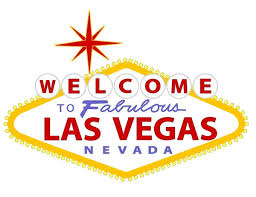Trade In or Sell Your Vet Equipment Today! Get a Valuation! | Call or Text (613) 358-5658 / (800) 267-4608
As I fly back from a week long holiday in Las Vegas, I am reminded of the many thousands of people I saw in the casinos’ gambling away their hard earned dollars. Nearly all of them had grim looks on their faces, as they were trying to win back their losses. In 7 days I only heard one Whoopee from one lucky gambler. I personally would rather spend my hard earned money on seeing the sights or a world class Vegas show. Often veterinarians do the same thing when buying equipment cross border or even within Canada.
As some of you know ESA has taken a keen interest in veterinary practices in Ontario, and the need to have medical equipment in compliance with the Electrical Safety Code. The recent article published in the OVMA Focus is clear evidence of this.
Why is this important? There is a lot of equipment being sold into the veterinary market from the US and even by some Canadian dealers, that is not in compliance with ESA. Most veterinarians assume that anything they buy in Canada from a Canadian dealer is electrically approved, and it should be. It is the dealer’s responsibility to sell approved equipment, or to endeavor to get it approved by an agency such as CSA or QPS. If the practice owner notices the equipment is not electrically approved, they should immediately contact whoever sold it to them to get the proper approval. Provided they are still in business, the dealer will hopefully comply, or face serious fines for non compliance, once they are reported.
Many practice owners buy products from the USA and have the equipment shipped to Canada, assuming that if they are legal to sell in the USA, they are legal to use in Canada. Not always so. If the equipment does not have the appropriate approvals they cannot be used in Canada. If you are inspected by ESA and found to be in non compliance, your practice has now assumed the liability, and can face serious fines from $50,000.00 or more levied by ESA. Visit the ESA website here. If the inspector has reason to believe it was an honest oversight, they may not fine you but they will immediately issue an order that the equipment may not be used until it is approved. Sound simple? Not really.
Getting equipment approved
I have spent about 25 years working with CSA special inspection services and QPS Inspection services and I can assure you that getting equipment approved for use in a veterinary clinic can be a daunting task, until you fully understand how it all works. Years ago it was so much easier as veterinary equipment was made primarily of metal and some plastic parts. Now practically everything is made of plastic and much of it is highly combustible. Why is this such a big deal? When an electrical inspector looks at any equipment that needs to be approved one of the most important tests is a combustibility test. The equipment casing is exposed to a constant flame for a fixed period of time and must self extinguish in a predetermined time, once the flame is removed. If it fails this test it cannot be approved as it is deemed a fire hazard. Allot equipment coming from the Far East (allot of the deals you see on the internet) fail this test.
Next it must pass an electrical leakage test followed by a dielectric strength test. If it passes both those tests, proper fuse polarity and fuse compliance is tested. Somewhere in this process the cord set is checked for CSA compliance along with grounding for electrical shorts. If all this passes you can get what is known as a “one time electrical approval” for that item only. Keep in mind that if this is done at your clinic site it usually involves 2 visits by a QPS or CSA field inspector at a cost of $2,500-$3,500.00, depending on where you are located. In addition the equipment owner will have to hire an Electromedical technician to make the required equipment modifications to make the device compliant, as the inspector only inspects the items, and will not modify them for compliance. Each individual item that is not in compliance with the ESA code must be inspected in this manner. Are you exhausted and feeling broke yet?
The hidden liability of unapproved equipment
Unapproved equipment is a health and safety hazard, and it is such a simple fix when equipment shopping. It is the responsibility of the individual buying the equipment to get in writing from the vendor, the approval for use in Canada and exactly what that approval is. Below is the list of accepted approvals for Canada:
It is a well known fact that insurance companies will not pay out claims for fires or personal injury that are proven to be caused by equipment that fails to meet ESA standards. Not to mention the risk to employees that comes along with using equipment that is not electrically safe.
When you shop be a wise shipper and do not just take the word of the sales person on the other end that the equipment is safe for use in Canada with the correct approvals. Get it in writing and even contact the manufacturers directly to confirm these approvals or of their dealers get the necessary “one time” electrical approvals. I know of veterinary clinic that lost the use of critical equipment they bought in Canada because it did not have electrical approval.
Don’t be a Las Vegas gambler when you buy your equipment. Do your due diligence and be sure you are not left in a lurch by a sales rep looking to turn a fast sale at your deep expense.

Website by
CyberCletch, LLC.
CONTACT US
173 MILSAP ROAD, YARKER, ON K0K 3N0, CANADA
(613) 358-5658 / (800) 267-4608
info@canmedical.ca
SOCIAL MEDIA